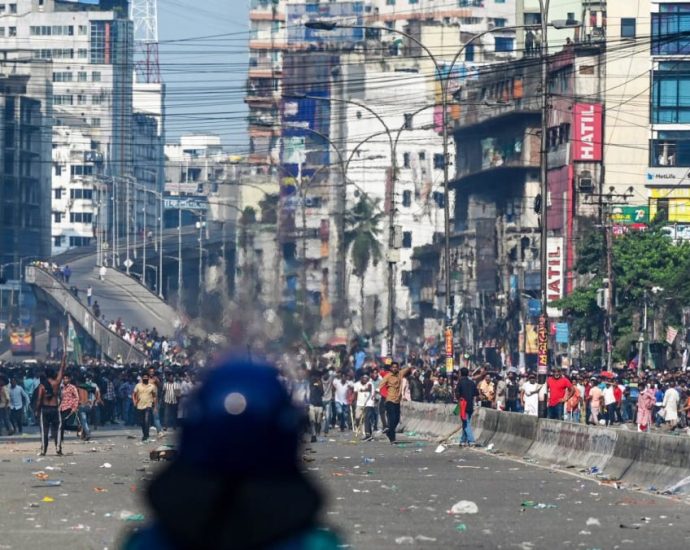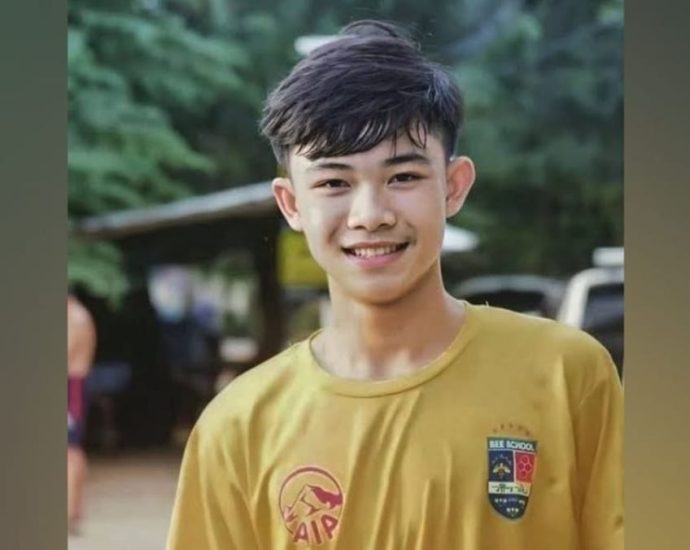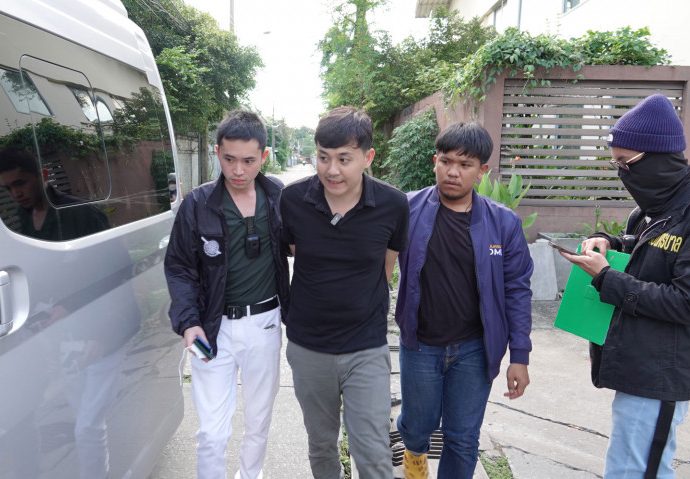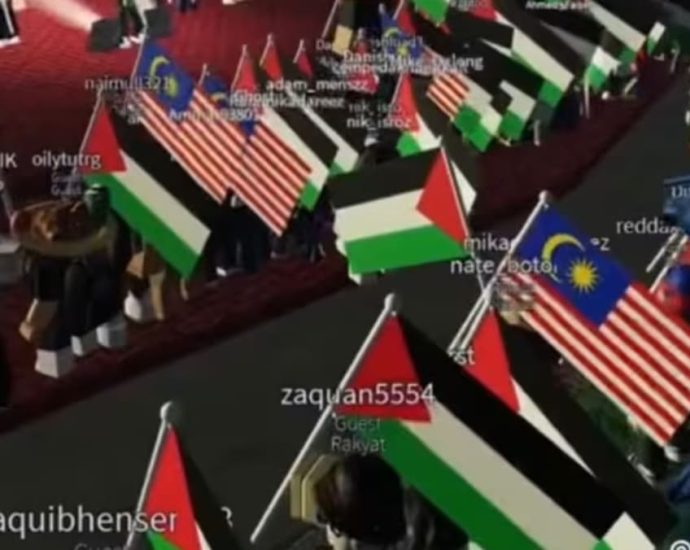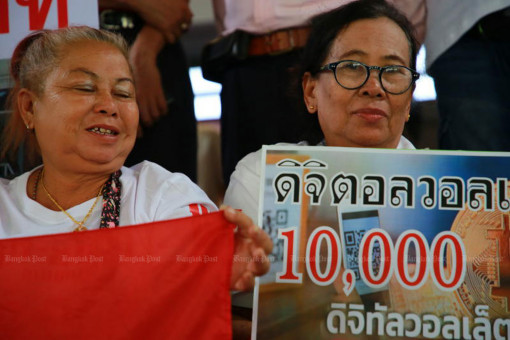More than 100,000 protest to demand Bangladesh PM step down
“Vote thief, vote thief, Sheikh Hasina vote thief,” chanted the crowd at the BNP demonstration in front of the party headquarters. Student activist Sekandar Badsha, 24, from Chittagong, said: “We demand the immediate resignation of the Hasina government, release of our leader Khaleda Zia and establishing the people’s right toContinue Reading
Bangladesh police break up anti-PM protest with tear gas, rubber bullets
One officer was killed and more than 100 injured, said Dhaka Metropolitan Police spokesman Faruk Hossain, telling AFP: “The constable was hacked in the head by opposition activists.” The protests by the BNP and the largest Islamist party, Jamaat-e-Islami, were the biggest so far this year, AFP journalists on siteContinue Reading
Captain of Thai football team rescued from flooded cave took his own life at UK school
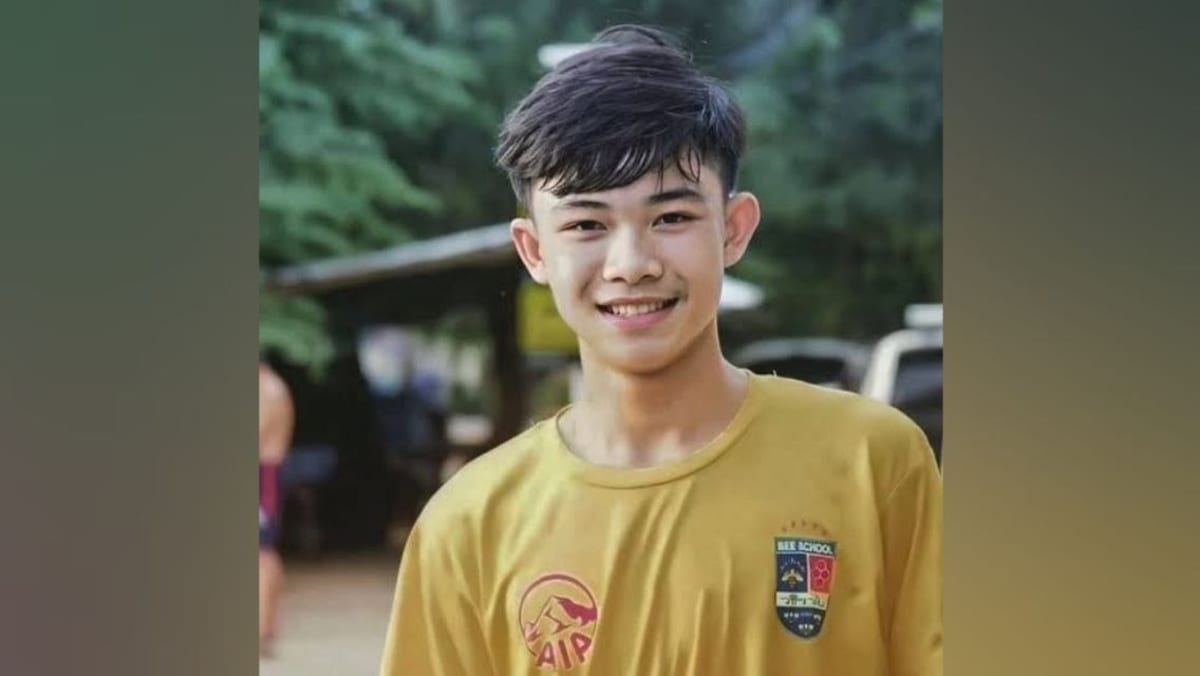
SINGAPORE: The captain of the Thai junior football team that was rescued from a flooded cave in 2018 took his own life at school in the United Kingdom earlier this year, a coroner has ruled.
Duangpetch “Dom” Promthep was 17 years old when he died in February.
He was found unconscious in his dormitory room on Feb 12 and died in hospital two days later. The teenager was a student at the Brooke House College Football Academy in Leicestershire.
British media reported on Friday (Oct 28) that following an inquest into his death, Professor Catherine Mason, senior coroner for Leicester city and south Leicestershire, recorded a conclusion of suicide.
“Mr Promthep was not known to mental health services, and it is not known why he took the actions that he did. It could not have been foreseen or prevented,” said the senior coroner, as quoted by the BBC.
“The police investigation has found no evidence of third-party involvement or suspicious circumstances.”
Man accused of defrauding 30 women
Suspect who posed as a construction tycoon and lawyer claims he only ‘borrowed’ money
PUBLISHED : 28 Oct 2023 at 17:01

Police have arrested a 27-year-old man in Chatuchak district of Bangkok on charges of defrauding more than 30 women by posing as a rich man on social media.
The suspect identified only as Krittidech, also known as Thanathorn, was nabbed in Vibhavadi Rangsit Soi 17 on Saturday after police learned that his latest victim was planning to pawn her car for him.
Mr Krittidech was the subject of arrest warrants issued by the Criminal Court in Bangkok and the Chiang Rai provincial court for various offences, including swindling people out of their money and falsifying official documents.
The suspect reportedly admitted the charges during initial questioning but insisted he only borrowed money from the women. One woman gave him a seven-figure sum that he reportedly spent on online gambling.
Police said Mr Krittidech created a false profile on social media where he posed as a CEO of a construction firm and a member of a law firm.
He posted pictures of luxury cars and wristwatches and claimed to know several celebrities to boost his credibility, police said.
After gaining the trust of potential victims, he would cook up a story to borrow money. He simply stole their belongings if the victims declined, police said.
More than 30 women fell victim to the deceptions, which resulted in some 10 million baht in losses, according to the police.
New task force to tackle organised crime
Interior ministry agency will target illegal nightspots, influential figures and related activity
PUBLISHED : 28 Oct 2023 at 16:45

The Department of Provincial Administration (DPA) has formed a central task force to step up enforcement of laws against an array of criminal offenders, ranging from drug traffickers to nightclub operators exceeding their closing time.
The new nationwide operation will start on Nov 1 and is part of a core policy introduced by Interior Minister Anutin Charnvirakul to ensure law and order, said Suttipong Juljarern, the ministry permanent secretary.
Each province may also set up its own task force to support the central unit, which will work around the clock on the new operation, he said during a video conference with provincial governors on Saturday.
Core responsibilities of the new task force include inspecting night entertainment businesses to ensure they strictly comply with closing times, enforcing the minimum age for patrons, prohibiting drug use in such establishments and banning weapons and gambling on-premises, he said.
Any entertainment businesses now operating without proper permits will definitely face a tough crackdown, said Mr Suttipong.
The task force will also support the ministry’s nationwide suppression of mafia-like criminal activity by keeping a close watch on those who are now named as influential figures, he said.
Mr Anutin ordered officials to compile a database on influential crooks nationwide following the murder of a police officer at the home of an influential tambon chief and construction billionaire in Nakhon Pathom province.
The effort was being overseen by Chada Thaised, a deputy interior minister whose own son-in-law, a mayor in Chai Nat, was arrested last week on charges of extorting a contractor.
The survey concluded that there are a total of 180 influential figures nationwide whose activities warrant close scrutiny.
Members of the public, meanwhile, are being encouraged to supply the ministry with more information about illegal activities and by submitting the information to the ministry’s Damrongdham centres nationwide, he said.
The centres will operate with extended hours from 6am to 6pm every day, he said.
As well, he said, more security checkpoints will be set up as more intelligence is gathered on illegal activities, namely drug trafficking, human trafficking, illegal weapons handling, gambling and more.
The DPA, which is also responsible for gun licensing, on Friday distributed a total of 5,000 body cameras to administrative officials across the country. They are to be used at security checkpoints and while investigating crimes, said a source familiar with the programme.
A body camera is required to be used in such situations, under Section 22 of the 2022 Prevention and Suppression of Torture and Enforced Disappearance Act.
Singapore updates COVID-19 vaccine advisory, recommends new dose about a year after last shot

UPDATED VACCINES
Following the recent approval of updated COVID-19 vaccines by Pfizer-BioNTech and Moderna, the Health Ministry said it will progressively roll out the new doses from Oct 30.
The updated formulations, which are designed to target newer variants of COVID-19, will eventually replace all existing ones by Nov 20.
The updated monovalent Pfizer-BioNTech/Comirnaty vaccine, for instance, is aimed at the Omicron XBB.1.5 sublineage which also includes EG.5 or Eris and BA.2.86.
People aged five years and above who wish to receive the updated Pfizer-BioNTech/Comirnaty monovalent vaccine may do so from Oct 30. The same vaccine will be available to children aged six months to four years from Nov 30.
For the updated Moderna/Spikevax monovalent vaccine, people aged six months and above may receive the jab from Nov 14.
EXTENDED HOURS AT VACCINATION CENTRES
In anticipation of higher demand for the updated vaccines, the operating hours for all Joint Testing and Vaccination Centres will be extended on Saturdays from Nov 4 to Dec 2.
The operating hours on Saturdays will be from 9am to 7pm, extending beyond the usual 1pm.
“A longer waiting period should be expected on Fridays and Saturdays,” MOH said.
The ministry added that as of Sep 30, reporting rates of adverse reactions and serious adverse reactions for the mRNA vaccines (monovalent and bivalent versions) remained rare at 0.10 per cent and 0.007 per cent respectively.
The incidence of myocarditis is rare, with reporting rates of 1.0 per 100,000 doses (0.001 per cent) for the monovalent vaccines and 0.4 per 100,000 doses (0.0004 per cent) for the bivalent vaccines.
“Vaccination remains our primary defence against COVID-19, and continues to be safe and effective,” MOH said.
“Protection from vaccination will wane over time. We therefore encourage all individuals to keep up to date with their vaccination once eligible.”
Operating hours for the Joint Testing and Vaccination Centres can be found here.
People may also receive COVID-19 vaccinations at these clinics.
Malaysia’s children take to online gaming platform Roblox for virtual pro-Palestine protests
A Roblox spokesperson told CNBC that it is aware of multiple pro-Palestinian protests on its platform. The spokesperson added: “While our Community Standards allow for expressions of solidarity, we do not allow for content that endorses or condones violence, promotes terrorism or hatred against individuals or groups, or calls forContinue Reading
Woman arrested for aiding prisoner’s escape
Four alleged accomplices now in custody but convict ‘Sia Paeng Na Nod’ remains at large
PUBLISHED : 28 Oct 2023 at 15:28

NAKHON SI THAMMARAT: A woman has been arrested for helping a prisoner serving time for attempted murder escape from a hospital in this southern province, bringing the total number of suspects in custody to four.
Police on Saturday took the woman, identified only as Wilawan, to Muang district police station for questioning.
Chaowalit Thongduang, alias Sia Paeng Na Nod, fled the hospital last Sunday morning and has still not been caught. He had been taken there for dental treatment and was subsequently admitted after collapsing, citing severe leg pain.
According to police, Ms Wilawan transferred money to another suspect, known only as Non, to cover his expenses during the escape.
Mr Non was tasked with driving a car to lead a pickup truck that took the prisoner away from the hospital. The pickup was later seized at a monastery in Phatthalung. Another pickup was reportedly travelling behind the vehicle carrying the prisoner for additional security.
Police will also seek an arrest warrant for Mr Non, said Pol Col Natthawut Thongthip, deputy commander of Nakhon Si Thammarat police.
A criminal record showed that Mr Non, a close aide of Chaowalit, had served jail time for drug and war weapons offences. He was released from jail almost one year ago.
Chaowalit was sentenced to 20 years and six months in jail last year by the Phatthalung Provincial Court for attempted murder in connection with an armed attack on police during an attempted abduction on Sept 2, 2019, in Phatthalung.
Chaowalit began serving his sentence at Phatthalung Prison in January 2022 and was transferred to Nakhon Si Thammarat Prison on Aug 7 this year. He also faces multiple other criminal charges.
EC asked to investigate digital wallet
Poll body may have broken its own rules by allowing Pheu Thai to make promise it can’t keep, says activist

Political activist Sonthiya Sawasdee has asked the Election Commission (EC) to investigate whether it erred in giving the Pheu Thai Party the go-ahead to campaign for its 10,000-baht digital wallet handout.
The commission might have broken its own rules against allowing parties to make promises they can’t keep, or to promise things that risk the country’s financial health, said Mr Sonthiya, a former adviser to the House committee on law, justice and human rights.
The EC might have breached Section 258(3) of the Organic Act on Political Parties by having approved the digital wallet policy even though it was impossible to execute, he said.
The original proposal by Pheu Thai called for every Thai aged 16 or over to receive a 10,000-baht handout to be spent locally to stimulate the economy. The cost was estimated at 560 billion baht, but the plan is now being scaled back.
Mr Sonthiya asked if the EC had studied the promise made during the campaign for the May 14 election and consulted with knowledgeable parties about whether it was practical before giving Pheu Thai the all-clear.
“During the general election period, the EC was the most powerful organisation,” he said on Friday. “Even the caretaker government had to gain approvals from the EC. Now I would like to request the EC to inspect its own past decisions.”
He also said that he would ask the National Anti‑Corruption Commission (NACC) to rule whether the poll body had breached the law and how the EC should take responsibility for approving policies that can’t be carried out.
Following scrutiny by the NACC, the issue could then be brought to the Constitutional Court, he said.
The NACC on Oct 20 said it was setting up a committee of experts to study the handout plan in detail and advise on whether it contains loopholes that could be exploited and lead to policy corruption.
Mr Sonthiya, a former member of the Palang Pracharath Party, complained that he had been filing reports to the EC about the digital wallet scheme for five months but the commission had not commented on the policy.
“The EC is unintentionally destroying democracy,” he said. “If any political party submits impractical policies and gains approval from the EC, it is a lie.
“People will no longer believe in democracy. And the EC should be the authority that questions lies from political parties.”
In a related development, Senator Somchai Sawangkarn said he would campaign for the digital wallet to be rejected by MPs and the public, hoping to pressure the government to reconsider its plan.
“I recommend the government spend its 560-billion-baht budget for the digital wallet policy on people in vulnerable groups instead,” he said.
A loan worth 560 billion baht, he said, would incur interest payments of 140 billion baht. Both MPs and the public should say no to “helicopter money” and encourage the government to solve wealth distribution issues in other ways, he added.
The digital wallet programme was originally scheduled to start on Feb 1 but Deputy Finance Minister Julapun Amornvivat has conceded it would be delayed until April or possibly beyond. In addition to funding challenges, authorities still haven’t decided who will receive the funds and how the digital distribution system can be made secure.
Wild Boars captain took his life, UK inquest concludes
Death of boy who was part of dramatic cave rescue ‘could not have been foreseen or prevented’
PUBLISHED : 28 Oct 2023 at 14:55

The captain of the young “Wild Boars” football team that was dramatically rescued from a flooded cave in Chiang Rai in 2018 took his own life while at a school in England, a UK coroner’s inquest has concluded.
Duangphet “Dom” Phromthep, 17, was found unconscious at Brooke House College in Market Harborough, Leicestershire, on Feb 12. He died two days later at Kettering General Hospital.
Prof Catherine Mason, senior coroner for south Leicestershire, recorded a conclusion of suicide following an inquest on Oct 4, British media reported on Friday.
In a record of the inquest seen by the British news agency PA, Prof Mason said Duangphet “was not known to mental health services, and it is not known why he took the actions that he did.
“It could not have been foreseen or prevented,” she wrote of the death. “The police investigation has found no evidence of third-party involvement or suspicious circumstances.”
The sudden death of Duangphet came as a shock to his family and friends. At the time, the cause of death was not known.
His ashes were returned to his grieving family in Thailand on March 4 following his cremation in England.
In a statement released on Friday, Ian Smith, the principal of Brooke House College, said its community “remains united in grief” over the death and that Duangphet would be “hugely missed”.
“As a college, the health, wellbeing and welfare of our students is our absolute priority. … The coroner also acknowledged the entire college community for the high quality of our student care, welfare and safeguarding and noted this tragic incident sadly could not have been foreseen nor prevented,” the statement said.
Duangphet was the captain of the football team whose rescue from the flooded cave captured the attention of the world in 2018. He won a scholarship to study at the football academy in Leicestershire in August last year.
In June and July 2018, Thai and international rescue teams mounted an operation to rescue 12 local footballers aged between 11 and 16 and their 25-year-old coach from the flooded Tham Luang cave in Mae Sai district of Chiang Rai.
They became trapped after they went to explore the underground complex on June 23 after football practice.
They were unable to leave when a sudden storm flooded the cave and spent 17 days underground before being found by two British divers.
Duangphet was the boy who first shouted out to the rescuers for help. He was then 13. A complex and dangerous rescue followed. One Thai rescuer died in the operation.


